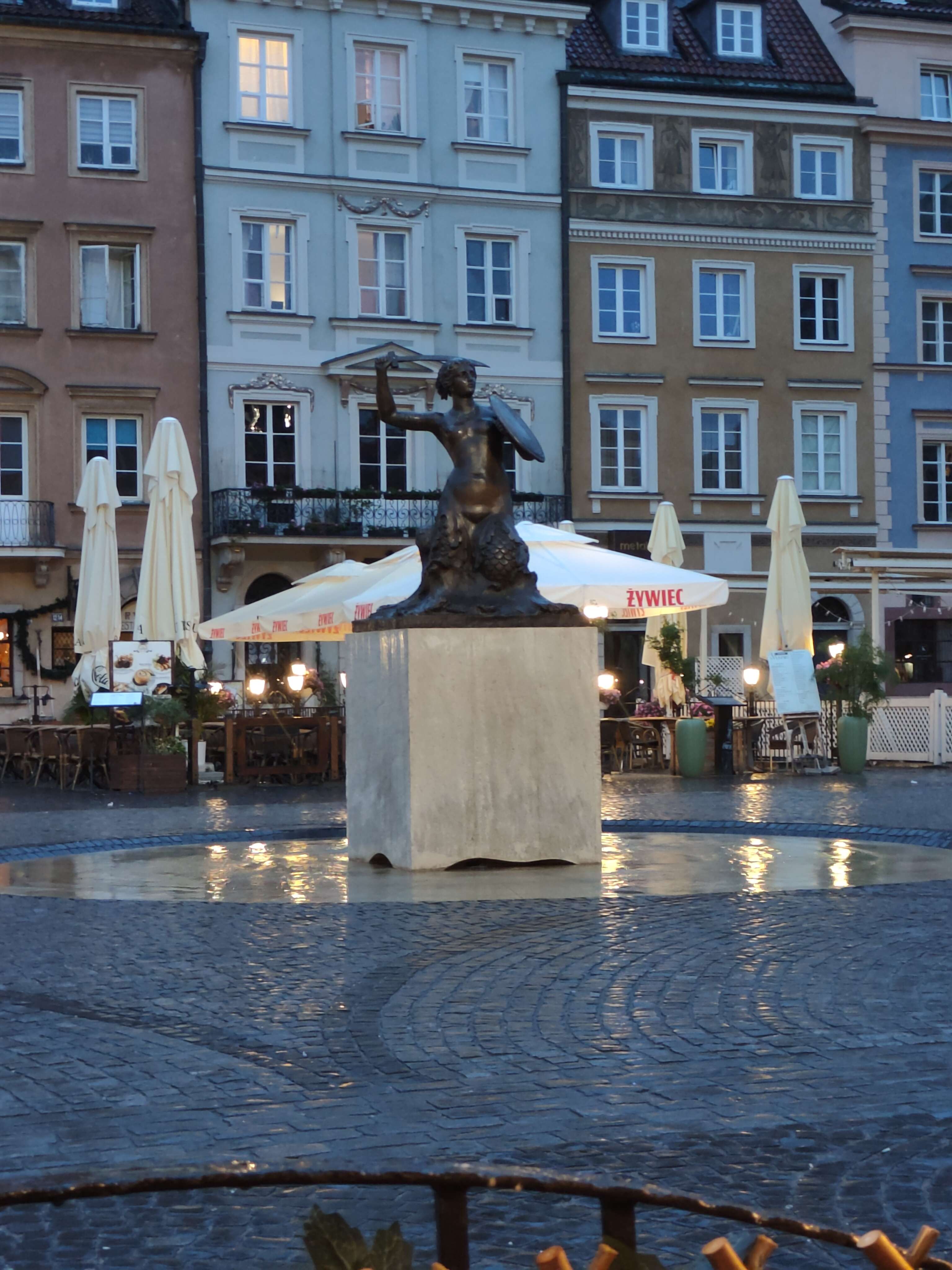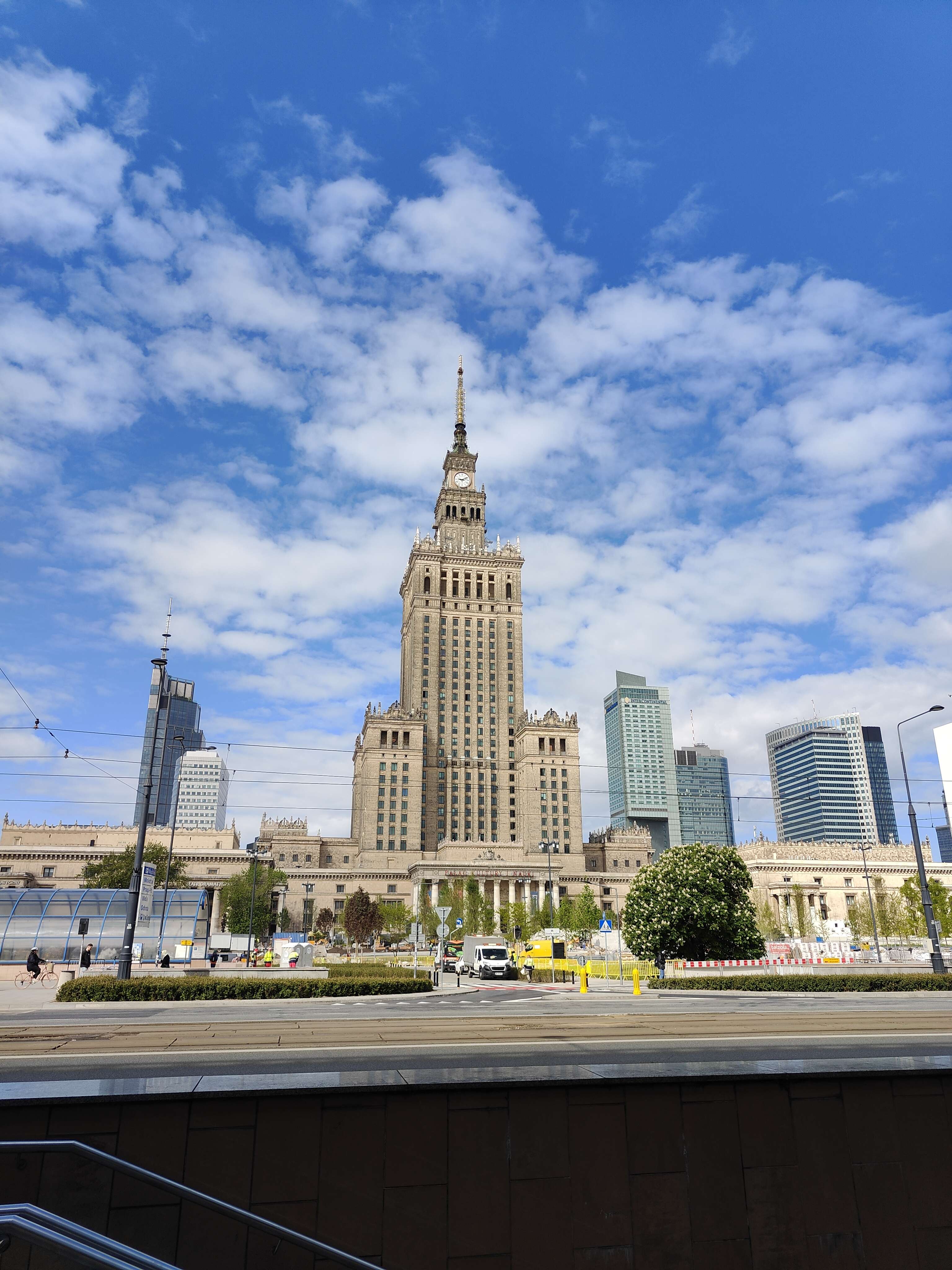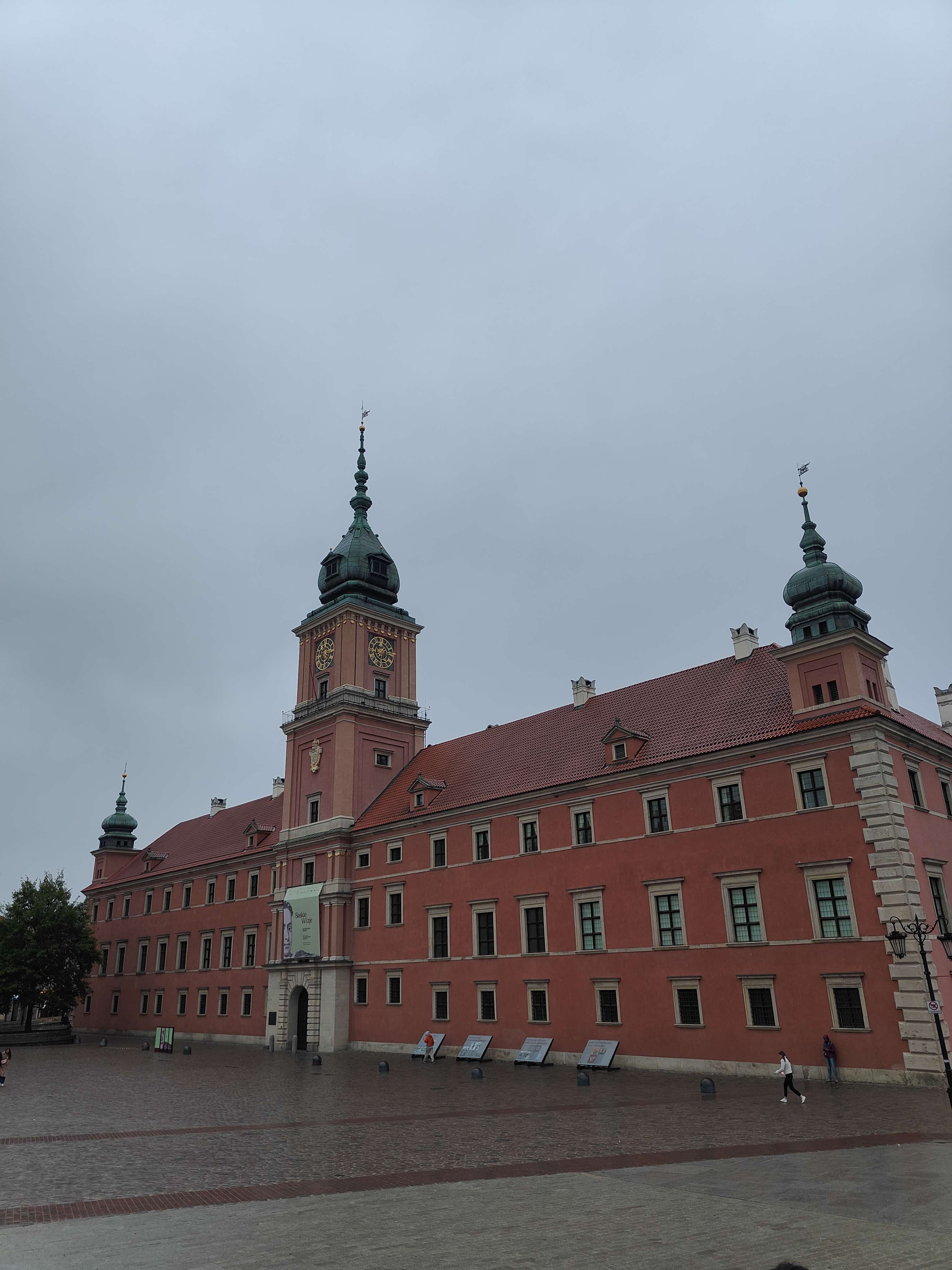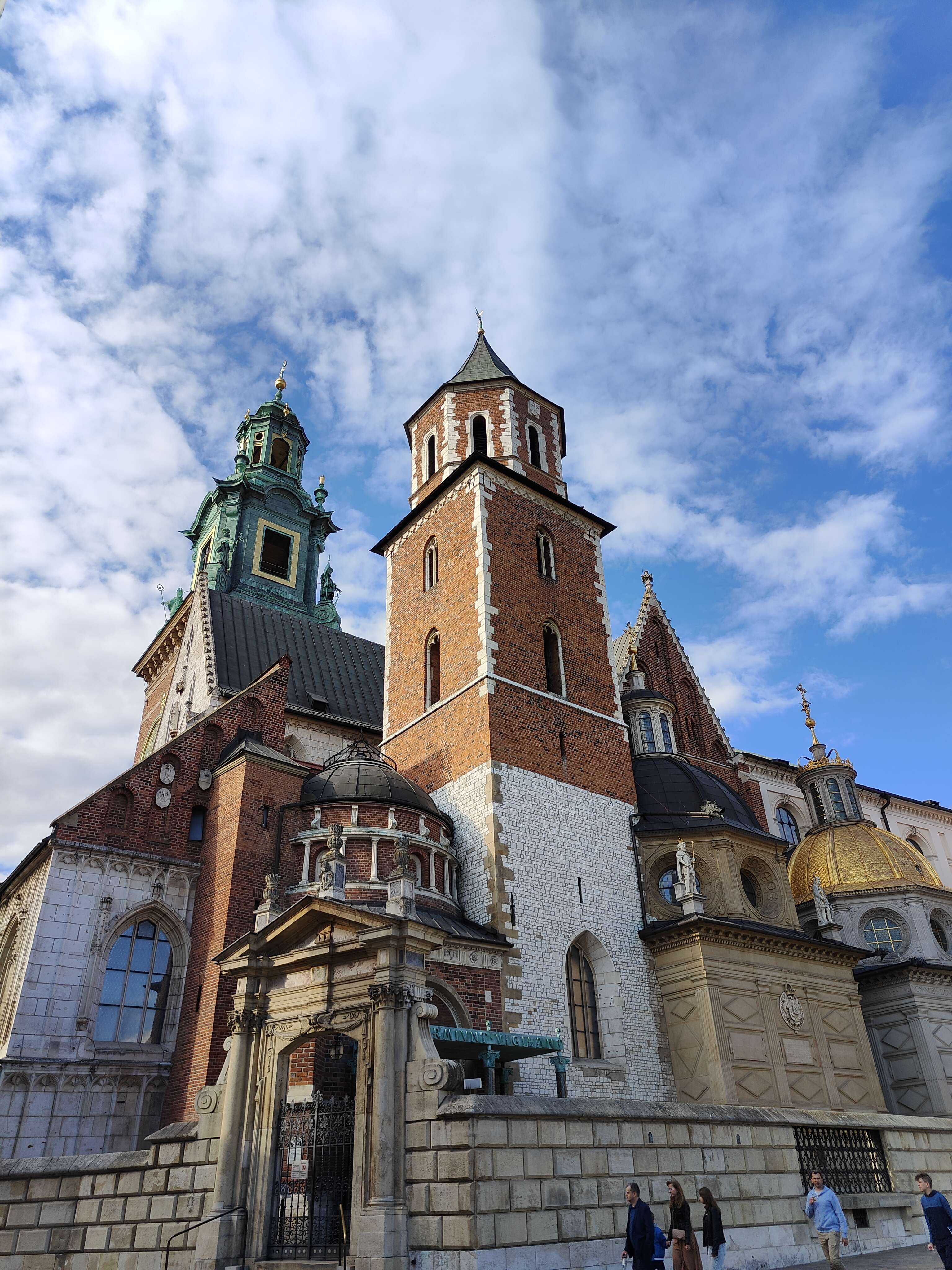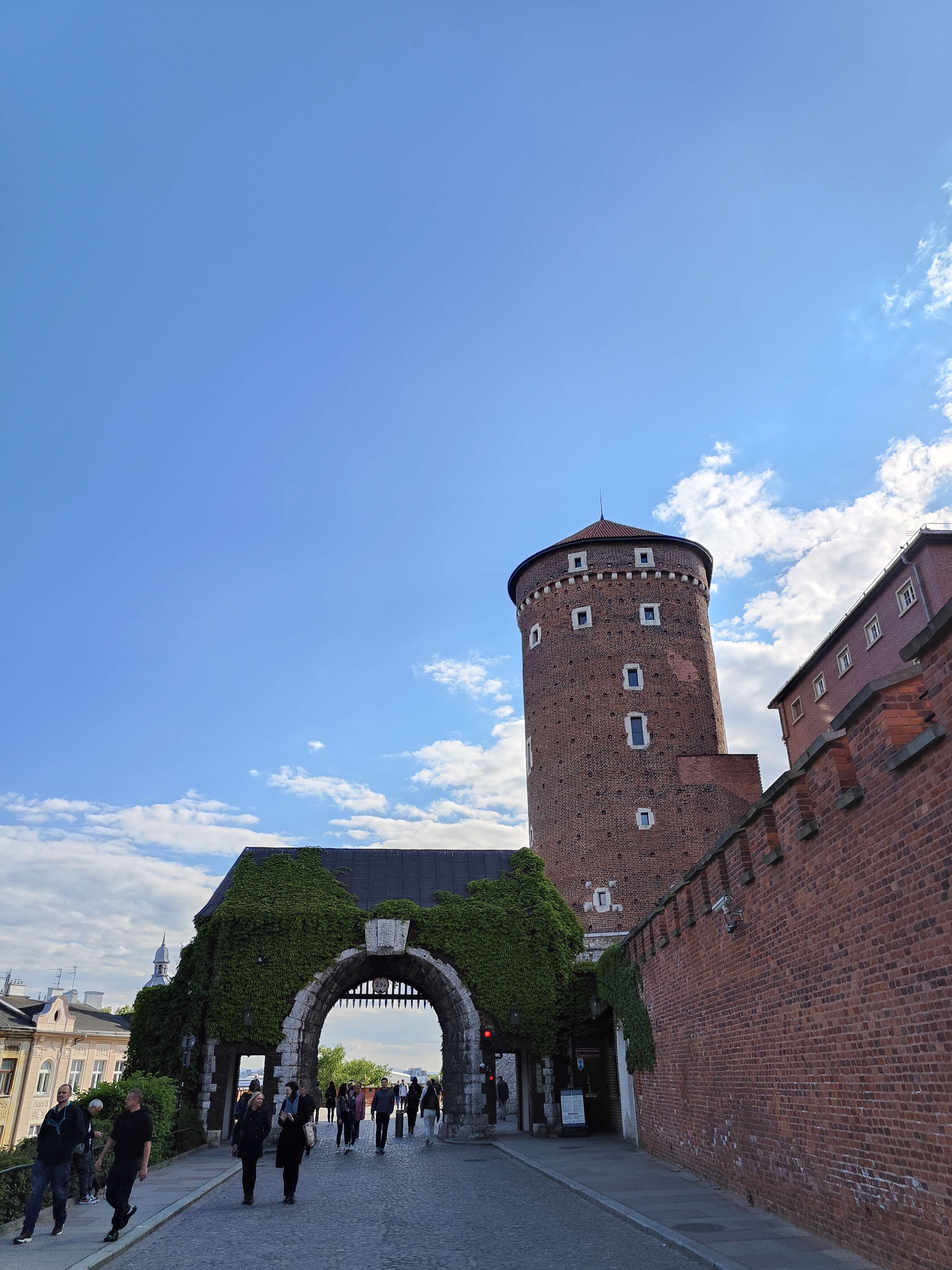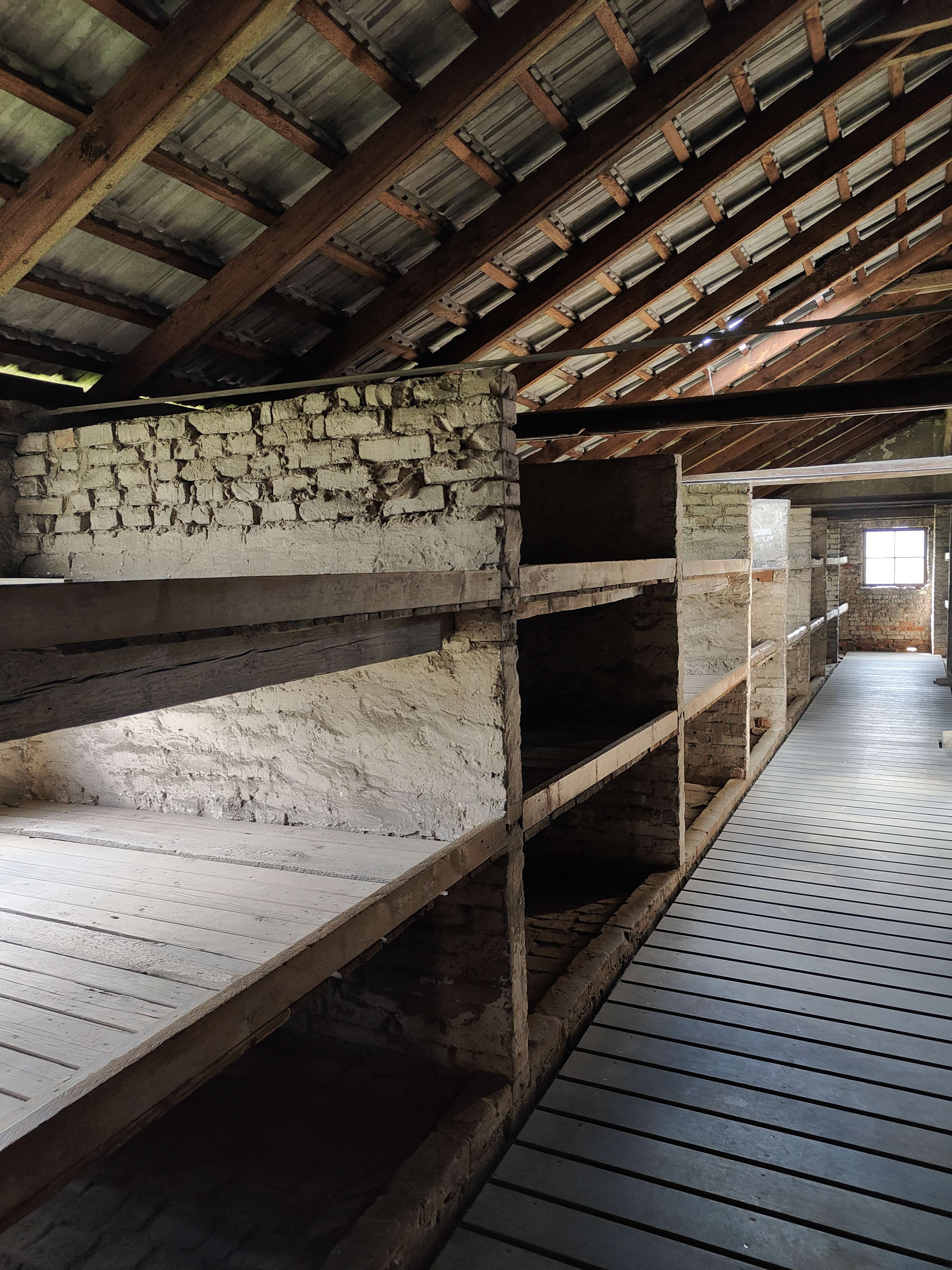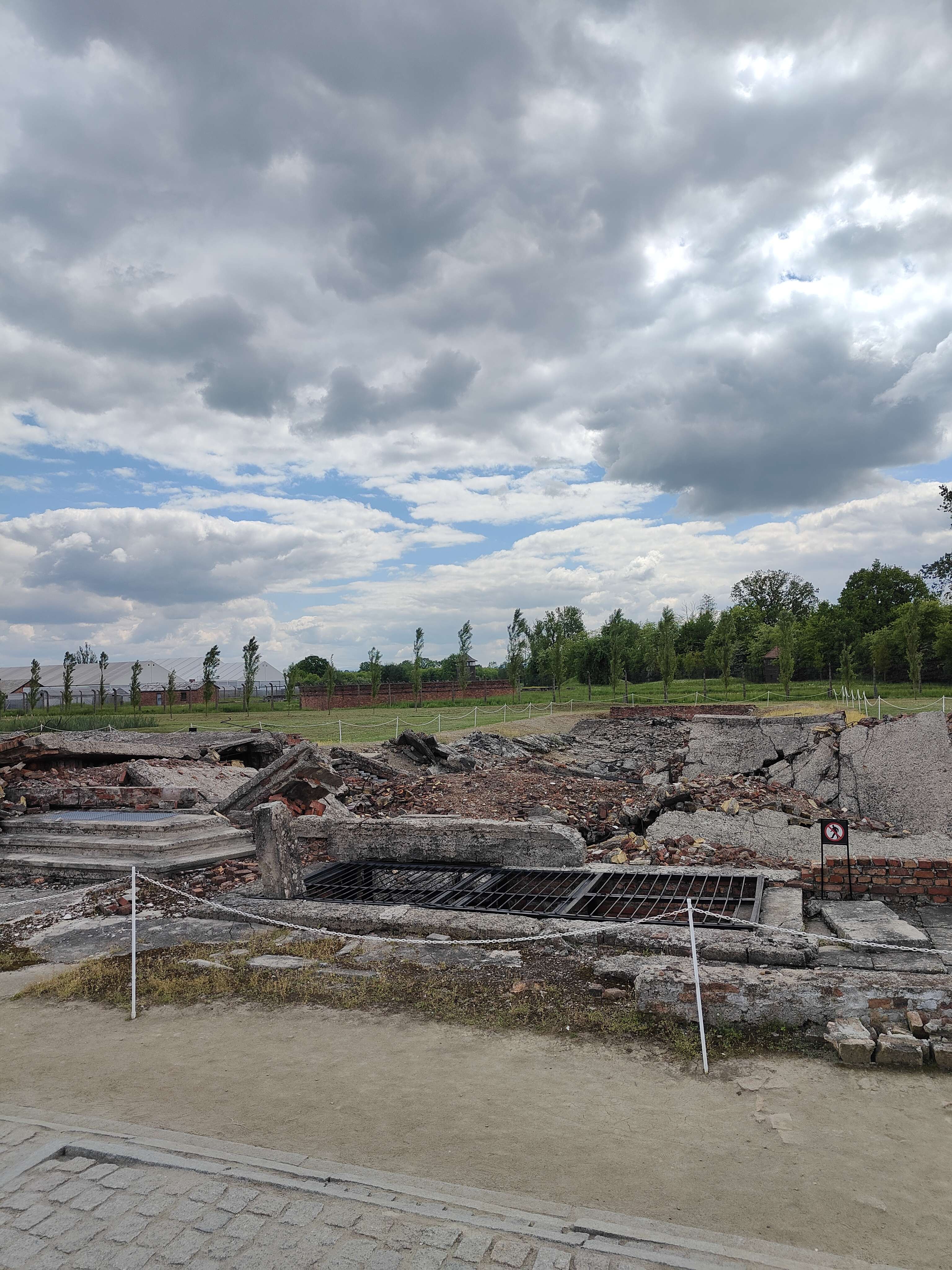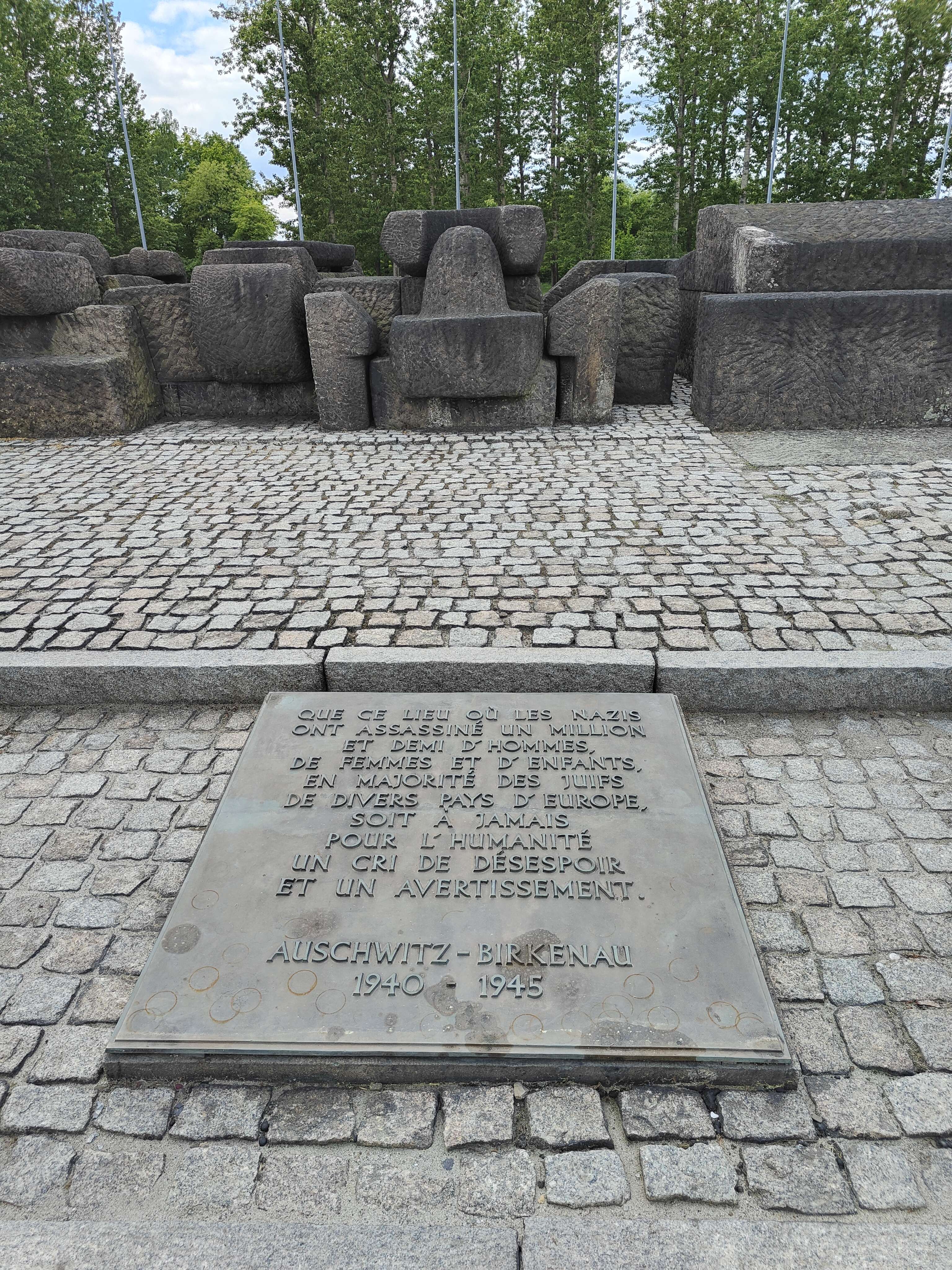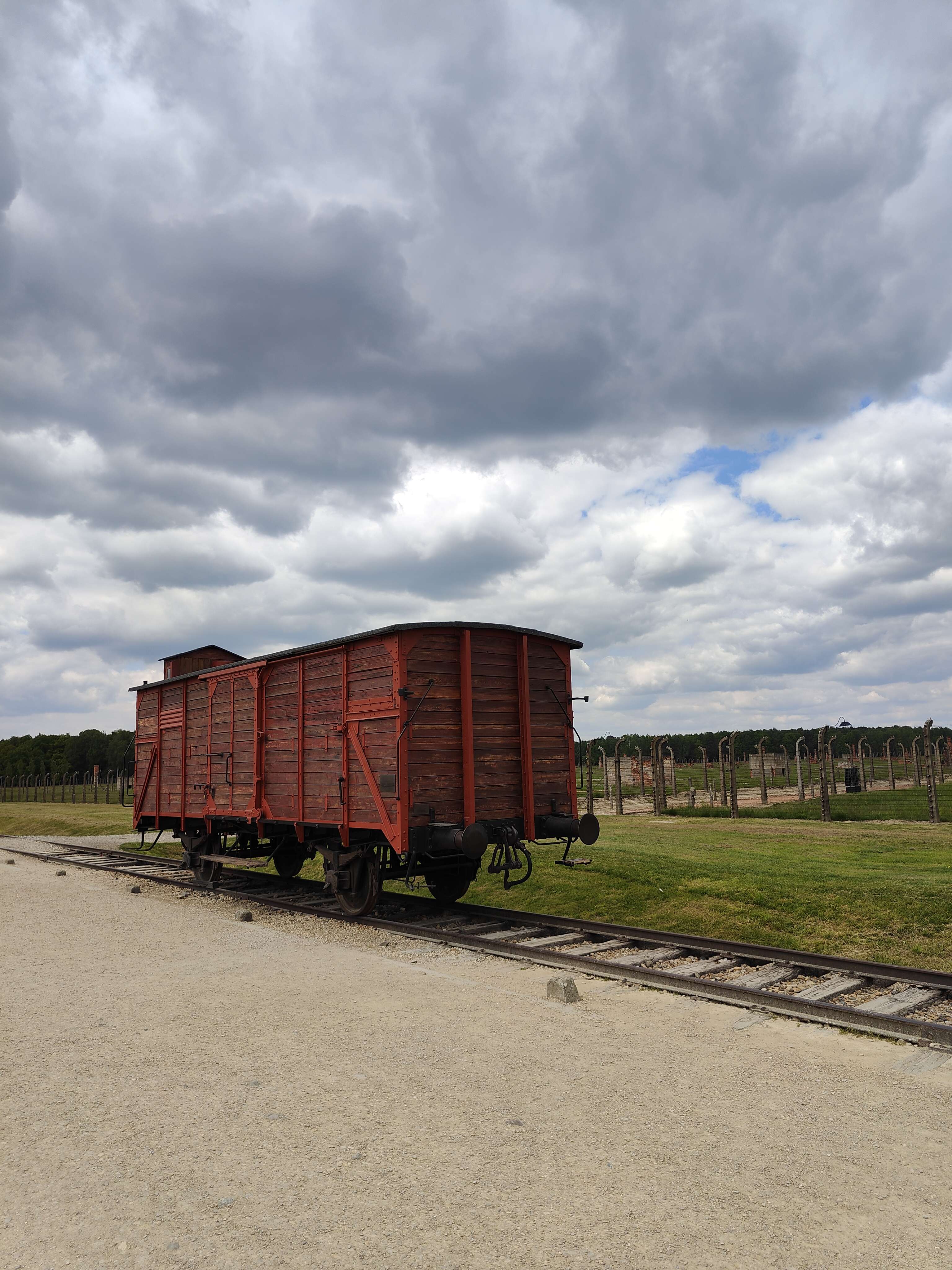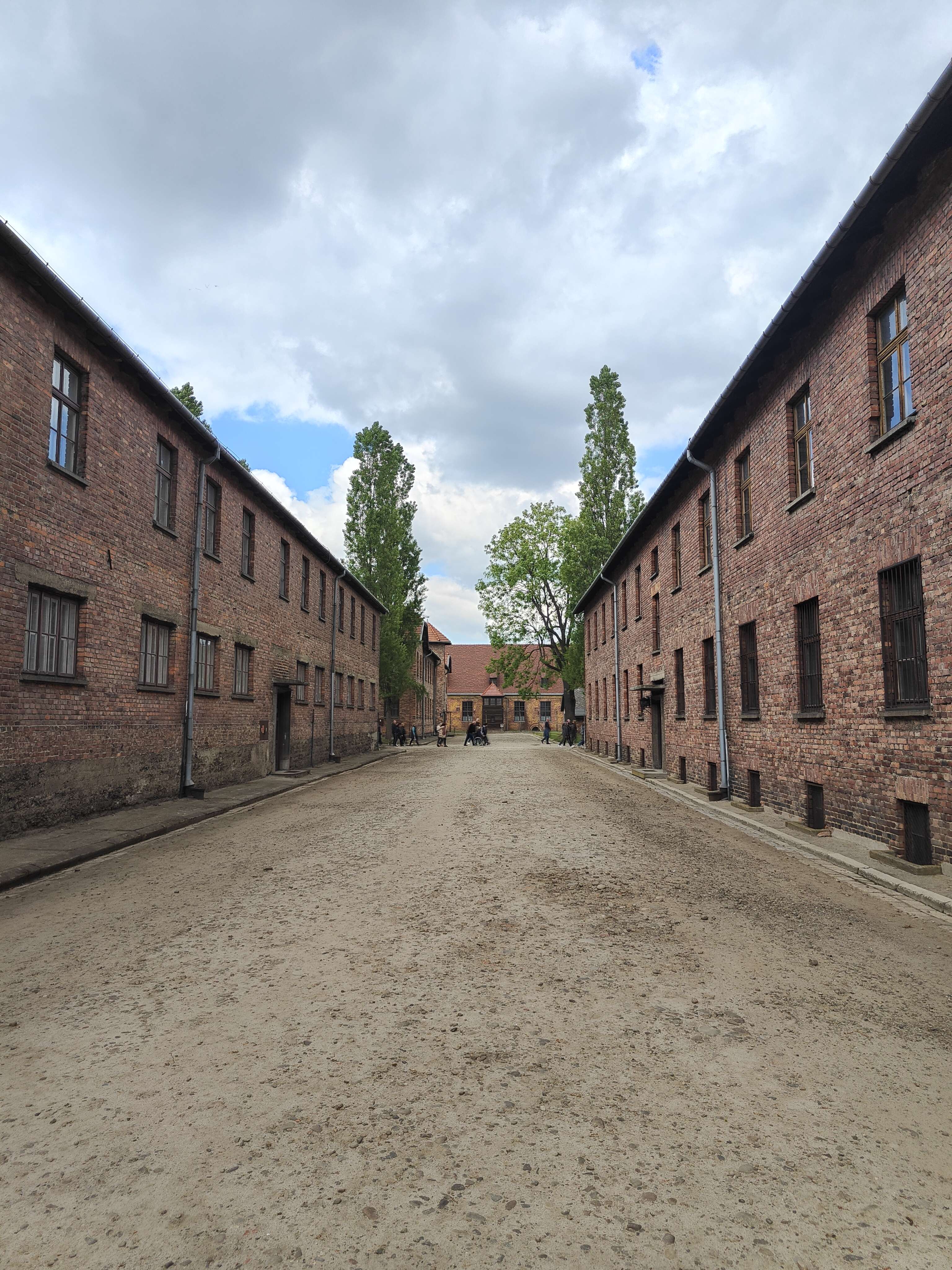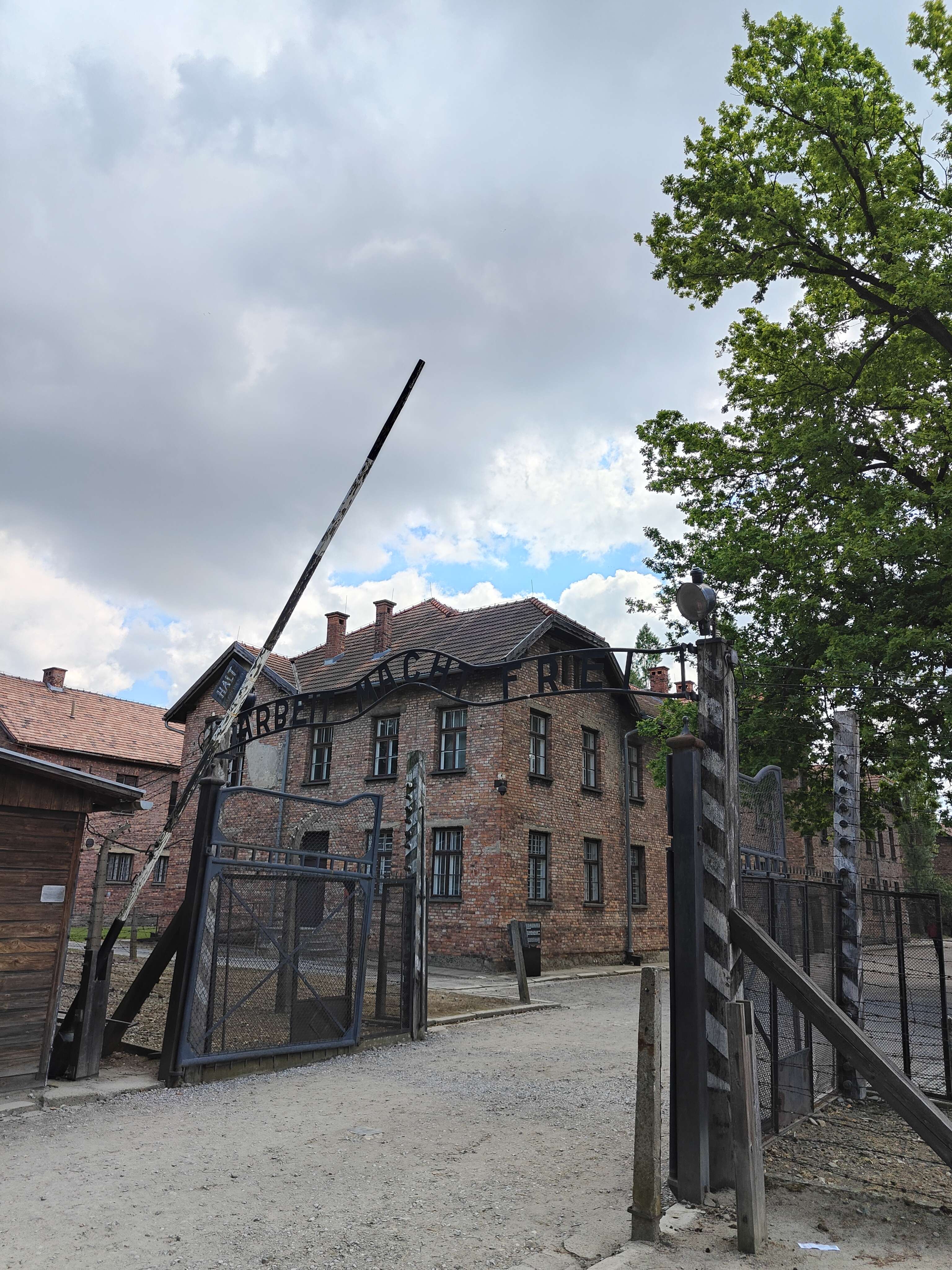
Trip to Poland – Malo
At the beginning of May, I had the opportunity to visit Poland, including the cities of Warsaw, Kraków, and the Auschwitz memorial.
Warsaw
Warsaw is the capital of Poland. I was particularly impressed by the architectural mix in the city. In the city center, you can find a huge skyscraper right next to an old residential building dating back to the post–World War II reconstruction period. We also visited Warsaw’s Old Town, full of beautiful red-brick buildings. At its center stands the mermaid, the protective symbol of Warsaw, holding her sword and shield the emblem of the city.
Kraków
Kraków is a smaller city, but I actually preferred it to Warsaw. The buildings felt more authentic. We visited Kraków Castle, a beautiful structure built on a hill overlooking the rest of the city. There were many viewpoints offering panoramic views. We didn’t stay very long, which is why I would like to return one day to explore more of this charming city.
Oświęcim
Oświęcim, known as Auschwitz in German, is a small town in the south of Poland, about 50 km from Kraków. Known as a symbol of the extermination of Jews by the Nazis during World War II, we went to visit its memorial the Auschwitz I and Birkenau (Auschwitz II) concentration and extermination camps. It was a detailed and explanatory visit about the plan implemented by the German Nazis to exterminate Jews and erase all traces of them.
The Auschwitz I camp was established on April 27, 1940, on the site of a former Polish military base, which was expanded by the Nazis into a concentration camp with 28 three-story brick blocks (mostly), covering about 20 hectares. The extermination center was built starting at the end of 1941. Before that, the camp was mainly used to imprison Poles whom the Nazi regime considered dangerous. The first prisoners were political opponents mostly Polish socialists or communists. Later, the camp also held resistance suspects, politicians, intellectuals, Germans sentenced by the courts, political prisoners, and those the Nazis called “asocial elements”: Roma people, prostitutes, homosexuals, the disabled, Jehovah’s Witnesses, and Jews.
We passed through the gate bearing the infamous motto Arbeit macht frei, “Work makes you free.” We were able to visit several blocks that were once used as dormitories for prisoners, some of which have been converted into exhibition rooms. In some of the rooms, we saw objects stolen by the Nazis from the detainees, and in one of the most disturbing rooms, tons of human hair estimated to belong to over 40,000 people.
We also passed the “Wall of Executions” located between blocks 10 and 11, and visited Block 11, known as the “Death Block,” which has been preserved in its original state. We also visited the reconstructed first gas chamber and crematorium of Auschwitz I.
Then we visited the Birkenau camp (Auschwitz II), located 3 km from the first camp. This is where most of the murders at Auschwitz took place. The Birkenau concentration camp could accommodate between 86,000 and 90,000 people at once, over an area of 191 hectares. Its construction was never fully completed, as it was halted by the arrival of the Red Army. Women/children and men were separated by fences and slept in wooden or, at times, brick barracks, which could house between 400 and 1,000 prisoners each.
Contrary to what one might think, the extermination section of the camp is not very large. There’s a disembarkation platform, a path several hundred meters long, and the gas chambers/crematoria. There were four in total, and it is estimated that 1.5 million people were murdered there mostly Jews and Roma. As part of their plan to leave no trace of their crimes, the Nazis left no records or documentation, making it impossible to determine the exact number of victims.
This trip was neither calm nor relaxing, but it was important for me to carry out this act of remembrance, as soon there will be no more living eyewitnesses of the crimes committed in these camps. It is therefore essential to remember, in order to do everything we can to ensure history does not repeat itself.
Some of my pictures
